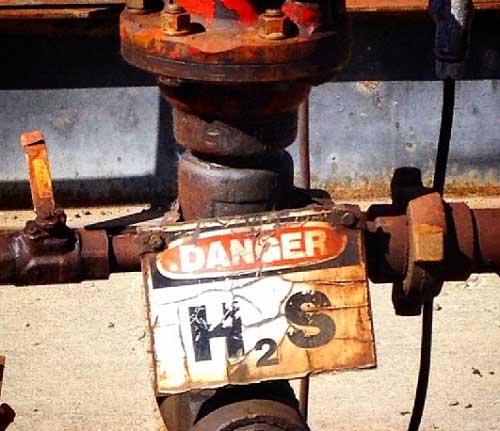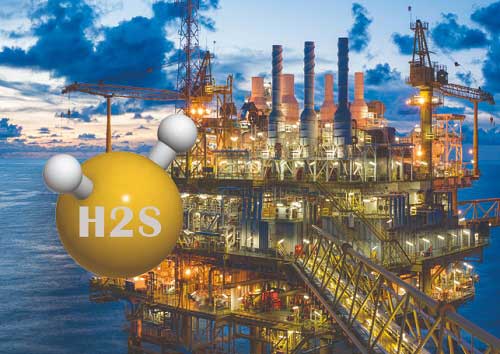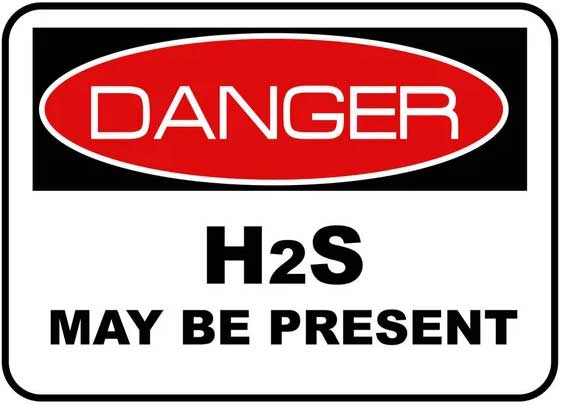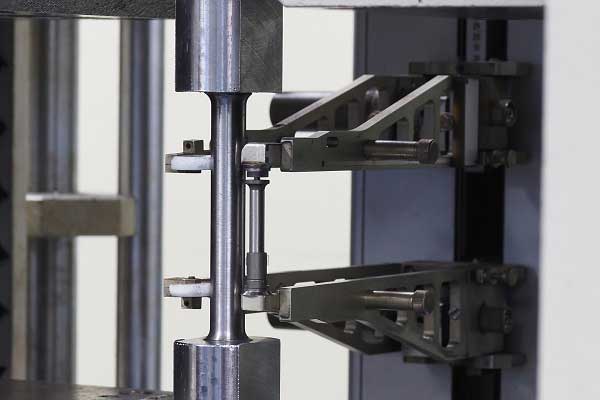What is sour service? |
Any process fluid containing hydrogen sulfide is defined as Sour Service. According to NACE MR0175 / ISO 15156, this is a process atmosphere containing H2S, which can lead to cracks in the material.
Sour service refers to oil and gas exploration and production environments where sufficient hydrogen sulfide (H2S) gas is present to crack metal materials. Hydrogen sulfide is highly flammable and explosive; it is lethal even at very low concentrations.
Sour service is one of the most difficult challenges in hydrocarbon production and well operators are looking for more cost-effective solutions that combine high-strength steel with resistance to stress cracking due to sulfide.
Stress-induced cracking is known to occur when certain metal parts/components are subjected to these so-called "sour" conditions under pressure. This often leads to catastrophic failure of process equipment in which large investments have been made, such as safety valves (PSV/PRV) and other components of pipelines and pressure vessels.
Sour service is described as a circumstance where hydrogen sulfide (H2S) is present in the environment. This toxic substance, found in the environment, is harmful to human health. It can also significantly affect the performance of steel drill pipes in service operations. Non-acidic services do not contain this hazardous chemical. Vallourec, for example, offers a wide range of high-collapse OCTG grades designed to meet the most demanding well environments and load scenarios and collapse situations.
Sour service steel pipes are used for pipelines in corrosive environments. This causes leaks in oil and gas pipelines and, in some cases, explosions. Manufacturing pipes for acidic applications is critical because pipe corrosion poses a significant risk to personal safety and environmental degradation.
In an H2S environment, sour pipe is usually used. H2S is a dangerous molecule, but it is also one of the most common causes of corrosion. The pipelines used must resist acid corrosion when the partial pressure of H2S reaches 300 pa.

What materials are suitable for use in sour service applications?
The NACE MR0175/ISO15156 standard describes suitable materials for sour environments in oil and gas production, including 316 stainless steel, 6 moly alloys, 2507, 825, 625, C-276 and Alloy 400. These materials have specific application and environmental limitations listed in this standard.
No stainless steel is completely immune to chloride ion-induced stress corrosion cracking (SCC). When selecting material from 316 stainless steel, it is important to specify a higher nickel and chromium content than the ASTM minimum requirement of 10% nickel and 16% chromium. Material produced from standard 316/316L stainless steel with minimum nickel and chromium content have been found to be more susceptible to chloride-induced stress cracking.
Higher nickel content provides better overall corrosion resistance, improved austenite stability for martensite formation and higher resistance to hydrogen embrittlement. When material contains large amounts of martensite, hydrogen embrittlement causes the material to become brittle and prone to cracking. Higher chromium content provides higher resistance to pitting corrosion.
Using the right material in a sour service can reduce the risk of SSC and SCC. Once a material corrodes, material degradation can lead to potentially catastrophic failures that impact the environment, personnel and safety and create unanticipated production costs. This risk requires understanding the requirements of NACE compliance standards and specifications based on the environmental conditions in which the product will be used.

Equipment reliability is essential as the oil and gas industry increasingly taps sour service supplies. Special attention is required for corrosion-sensitive equipment such as valves, fittings and instrumentation. Adherence to NACE MR0175 & ISO 15156 recommendations and a clear understanding of alloy limitations is critical for safe equipment that will last in demanding acid gas environments.

Related Post(s)

Ultimate tensile strength is an important property of materials to determine their mechanical performance...